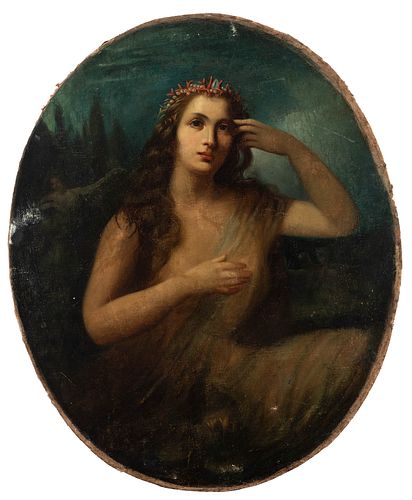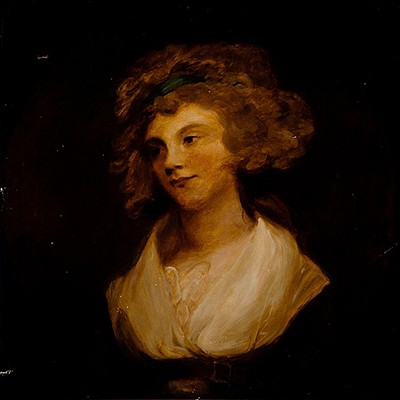Italian school; early 19th century. "Portrait of lady as a marine deity". Oil on canvas. Relined.
About Seller
Carrer Aragó 346
Barcelona
Spain
Setdart Subastas was born in 2004 and is currently the first online art auction in Spain with solidity, prestige and reliability guaranteed by our more than 60,000 users. Setdart has a young, dynamic and enterprising team ready to successfully manage the purchase and sale of art works through custom...Read more
Two ways to bid:
- Leave a max absentee bid and the platform will bid on your behalf up to your maximum bid during the live auction.
- Bid live during the auction and your bids will be submitted real-time to the auctioneer.
Bid Increments
| Price | Bid Increment |
|---|---|
| EUR€0 | EUR€10 |
| EUR€200 | EUR€25 |
| EUR€500 | EUR€50 |
| EUR€1,000 | EUR€100 |
| EUR€3,000 | EUR€200 |
| EUR€5,000 | EUR€500 |
| EUR€10,000 | EUR€1,000 |
| EUR€20,000 | EUR€2,000 |
| EUR€50,000 | EUR€5,000 |
About Auction
Nov 25, 2021
Setdart Auction House sofia@setdart.com
- Lot Description
Italian school; early 19th century. "Portrait of lady as a marine deity". Oil on canvas. Relined. Presents repainting. It has inscription on the back and old sticker. Measurements: 78 x 64 cm. In this portrait of oval format the author reveals the body of a voluptuous woman, dressed with a silk that sticks to her body and lets intuit the forms of the same one. Facing the viewer, the lady is serious, raising her gaze to the front, devoid of details except for the crown she wears on her head. A crown that is made with coral and seashells, which indicates the assimilation of the model with a marine deity, perhaps with a nereid. This iconographic reference indicates that it is a portrait, probably of a woman belonging to the nobility dressed in the classical manner. A current of portrait painting that began to become fashionable in the eighteenth century, and continued to consolidate throughout the nineteenth century. The interest in classical antiquity awakened by the excavations of Pompeii and Herculaneum, coupled with the recovery of classical texts, gave rise to a fashion that was inspired by the myths and legends of the ancients, thus conquering the furniture, clothing and even the way in which the most important ladies of society were immortalized. A fact that was promoted to a great extent by Emma Hamilton, wife of the English ambassador in Naples, who adopted the costumes and interpreted roles of classical inspiration to entertain her guests. During the 18th century the panorama of European portraiture was varied and broad, with numerous influences and largely determined by the taste of both the clientele and the painter himself. However, in this century a new concept of portraiture was born, which would evolve throughout the century and unify all the national schools: the desire to capture the personality of the human being and his character, beyond his external reality and his social rank, in his effigy. During the previous century, portraiture had become consolidated among the upper classes, and was no longer reserved only for the court. For this reason, the formulas of the genre, as the 17th century progressed and even more so in the 18th century, became more relaxed and moved away from the ostentatious and symbolic official representations typical of the Baroque apparatus. On the other hand, the eighteenth century will react against the rigid etiquette of the previous century with a more human and individual conception of life, and this will be reflected in all areas, from the furniture that becomes smaller and more comfortable, replacing the large gilded and carved furniture, to the portrait itself, which will come to dispense, as we see here, of any symbolic or scenographic element to capture the individual instead of the character.
Dimensions:
INV Number:
78 x 64 cm.
35256440 - Shipping Info
-
In-house shipping available. Please inquire at admin@setdart.com.
-
- Buyer's Premium



 EUR
EUR CAD
CAD AUD
AUD GBP
GBP MXN
MXN HKD
HKD CNY
CNY MYR
MYR SEK
SEK SGD
SGD CHF
CHF THB
THB
















